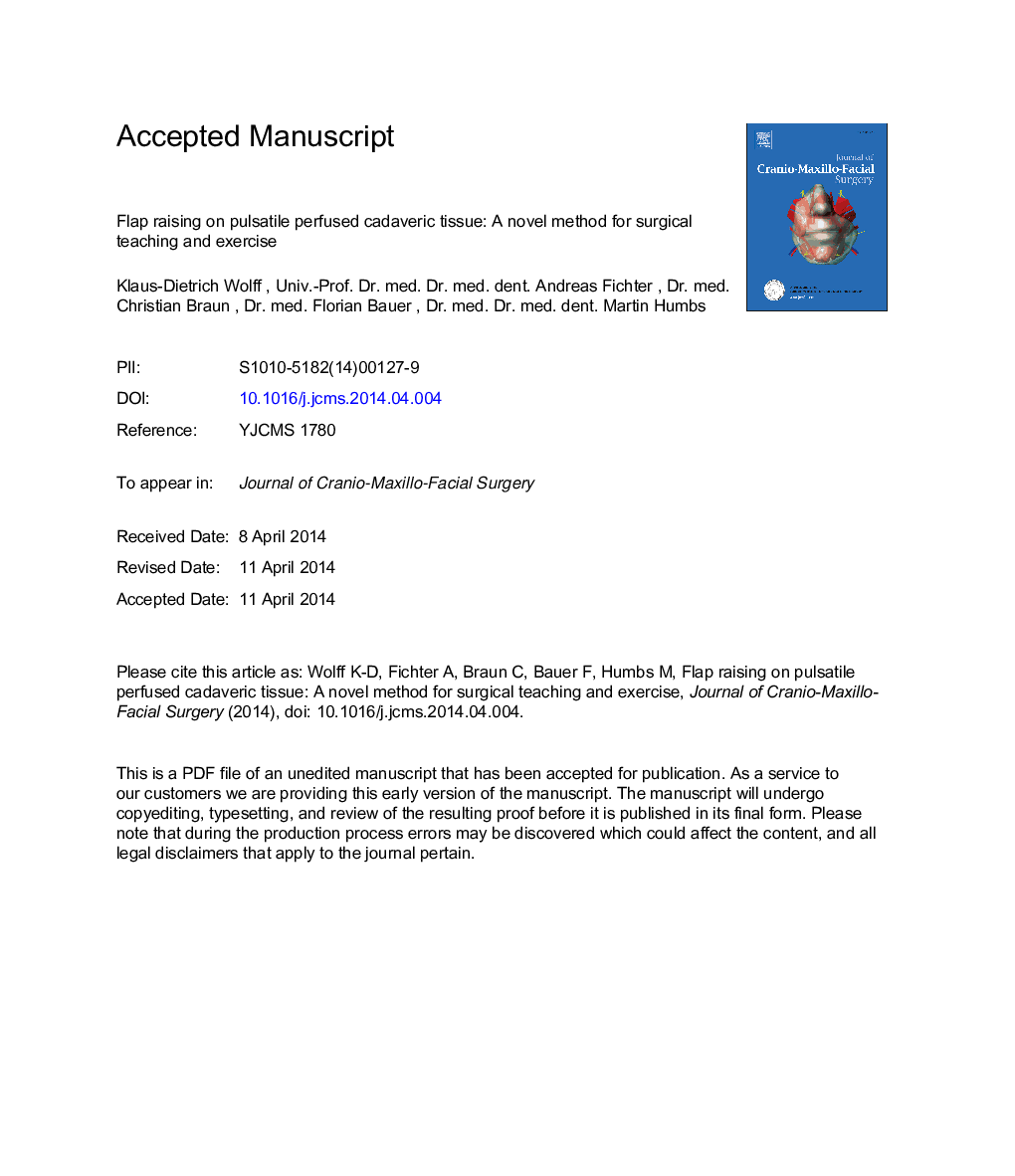| Article ID | Journal | Published Year | Pages | File Type |
|---|---|---|---|---|
| 6052739 | Journal of Cranio-Maxillofacial Surgery | 2014 | 30 Pages |
Abstract
Exercising flap raising procedures on cadavers is considered a prerequisite to prepare for clinical practise. To improve teaching and create conditions as realistic as possible, a perfusion device was developed providing pulsatile flow through the vessels of different donor sites. A plastic bag filled with red stained tab water was placed into a pump, which was driven by an electric motor. The bag was set under rhythmic compression with variable frequency and pressure. The pedicles of the radial forearm, anterolateral thigh, rectus abdominis, fibular and iliac crest flap were cannulated at the origin from their source arteries. Flap raising was performed under pulsatile perfusion in 15 fresh bodies and subsequently in 6 Thiel-embalmed cadavers during a flap raising course. We regularly observed staining of the skin and skin bleeding in fresh bodies and less reliable in embalmed cadavers. All flap pedicles showed pulsatile movements, and the radial pulse became palpable. Most perforators of the anterolateral thigh and osteocutaneous fibular flap could be identified by their pulse. Bleeding from bony tissue and venous return was seldom observed. We conclude that pulsatile perfusion of cadaveric tissue creates more realistic conditions for flap raising and improves teaching for beginners and advanced surgeons.
Keywords
Related Topics
Health Sciences
Medicine and Dentistry
Dentistry, Oral Surgery and Medicine
Authors
Klaus-Dietrich Wolff, Andreas Fichter, Christian Braun, Florian Bauer, Martin Humbs,
